#Cloud-based system
Explore tagged Tumblr posts
Text
5 Benefits of Having a Best CRM Software
Customer Relationship Management (CRM) software has become indispensable for businesses of all sizes. It not only helps in managing customer interactions but also streamlines various business processes. Here are five key benefits of implementing the best CRM software:
1. Improved Customer Relationships
A CRM system centralizes customer data, including contact information, purchase history, preferences, and interactions across various channels. This holistic view allows businesses to understand their customers better, anticipate their needs, and personalize interactions. By fostering stronger relationships through timely and relevant communication, businesses can enhance customer satisfaction and loyalty.
2. Enhanced Efficiency
CRM software automates repetitive tasks such as data entry, email communication, and follow-ups, freeing up valuable time for sales and customer service teams. Workflow automation ensures that tasks are completed consistently and promptly, reducing the risk of human error. With streamlined processes, teams can focus on high-value activities like lead nurturing and strategic decision-making.
3. Better Sales Management
CRM systems provide insights into sales pipelines, opportunities, and forecasts. By tracking interactions and monitoring sales performance in real-time, managers can identify bottlenecks, optimize workflows, and allocate resources effectively. Sales reps benefit from access to up-to-date information, enabling them to prioritize leads, tailor pitches, and close deals faster.
4. Data-driven Decision Making
Access to comprehensive analytics and reporting tools empowers businesses to make informed decisions. CRM software generates customizable reports on sales trends, customer behavior, and campaign effectiveness. These insights enable stakeholders to identify growth opportunities, refine marketing strategies, and allocate budgets based on performance metrics rather than assumptions.
5. Improved Collaboration and Communication
CRM systems facilitate seamless collaboration across departments by providing a centralized platform for sharing information. Teams can access customer data, notes, and communication history, fostering a collaborative environment focused on customer satisfaction. Enhanced communication ensures that everyone is aligned on customer needs and objectives, leading to more cohesive and effective teamwork.
In conclusion, investing in the best CRM software offers numerous benefits beyond just managing customer relationships. It enhances efficiency, drives sales growth, supports data-driven decisions, and promotes collaboration across the organization. By leveraging CRM technology, businesses can gain a competitive edge in today's dynamic marketplace while delivering exceptional customer experiences.
For more information, contact us and get FREE DEMO.
+91 9023230746
www.delighterp.com
I hope you enjoy the Article.
#CRMSoftwrae#CRMSolutions#lead management#inventory management#Software Service#Cloud-based system#CRM System
0 notes
Text
actually yeah it is really annoying that we don't have an offline and/or privacy-focused system tracking app and neither option has import options outside of pluralkit
#like sp is exclusively online based and the only import option is pluralkit which is dogshit for privacy#then octocon apparently completely fucked up their privacy features while fixing none of the issues sp has#like simplyplural could be really good for us in concept but in practice we're a large system and theres no easy way for us to get everyone#simply plural#octocon#plurality#pluralgang#also for sp its like why in the lord do you have an import feature but not an export feature#just because something is in the cloud doesn't make it safe (tm)
15 notes
·
View notes
Text
No Qu TAM - Time and Attendance Management System
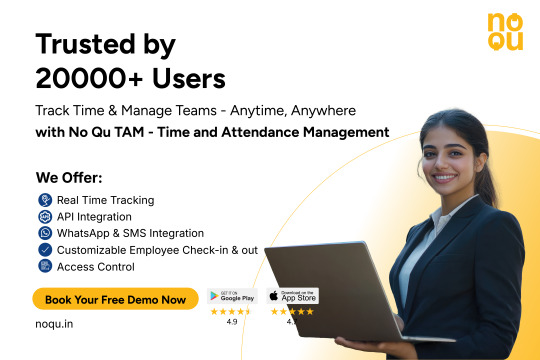
No Qu TAM (Time and Attendance Management) System is a smart, cloud-based solution designed to simplify how companies manage employee attendance, time tracking, and leaves. Built to meet the needs of both small and large teams.
Traditional attendance systems have become a thing of the past. With No Qu TAM, organizations become super-efficient with very less capital investment and complete digital transformation.
Why Choose No Qu TAM?
SaaS Attendance Platform No Qu TAM is a cloud-based SaaS attendance solution that requires no complex hardware. It’s easy to deploy, access, and scale from anywhere.
All-in-One Attendance Management System Track work hours, shifts, check-ins, and records everything centralized in a single platform.
Simple and Powerful Attendance App An intuitive No Qu attendance App that lets employees mark attendance with mobile devices.
Mobile App Based Attendance Software Ideal for hybrid or remote models, this mobile app based attendance software provides flexibility and ease of use.
Face Recognition Attendance System Offers fast, secure, and contactless check-ins using advanced face recognition technology.
Supports Biometric Devices Integrates with biometric devices for fingerprint or retina-based attendance where needed.
Real Time Attendance Tracking App Get real-time visibility into check-ins, work hours, and employee activity with live tracking.
Attendance App for Employees A reliable and user-friendly solution that reduces manual effort and boosts engagement.
Built-in Leave Management System The integrated leave management module allows staff to apply for leave and get instant approvals.
Geo Fencing Use geo fencing and geo tag features to define check-in zones and verify employee locations.
AI Attendance System An intelligent AI attendance system that offers predictive insights and flags irregular patterns automatically.
Workflow Automation Streamline HR tasks and approvals with integrated workflow features that improve operational speed.
HRMS & Payroll Software Integration Seamlessly connects with your existing HRMS and payroll software for end-to-end HR efficiency.
Easy Multi Dimensional Reports Generate detailed, multi-dimensional reports for better analytics, compliance, and decision-making.
No Qu TAM is your all-in-one, AI-powered workforce solution - making time tracking smart, simple, and future-ready.
#no qu#no qu TAM#TAM#attendance#attendance management app#attendance management software#attendance system#saas technology#business#time and attendance management#attendance app#attendance software#ai attendance#cloud based attendance#attendance tracking#employee tracking#live tracking#saas#b2b saas#softwaredevelopment#geofencing#biometric attendance#face recognition attendance system#saas attendance#leave management#geotag#multi dimensional reports#hrms#workflow#Qr attendance
2 notes
·
View notes
Text

I'm making Hurricane Milton do something useful when he comes (water in my new wildflowers) :P
#It's the least he can do really#my apartments irrigation system was struck by lightning last summer so i try to plan my planting based on the forecast#mind you i was expecting a tropical storm today/monday (that turned out to be nothing) not a cat 3 on wednesday#wildflowers#every cloud silver lining etc etc#juniper blethers
7 notes
·
View notes
Text
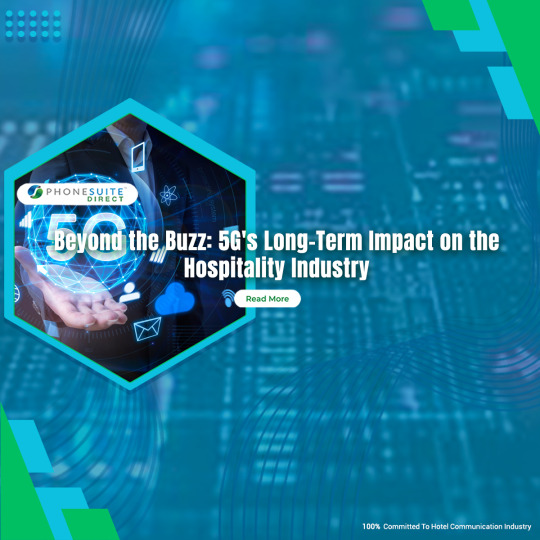
5G technology can offer advantages that have the potential to revolutionize the hotel landscape. Let’s take some time to dive deeper into how and why this next-generation wireless technology could have major implications for your business. Read More...
#voip technology#business phones#5G Technology#5G Network#Cloud technology#pbx system#voip advantages#phonesuite direct#voip phone#hotel hospitality#phonesuite dealers#hotel phone system#pbx communications#VoIP Protocol#SIP Protocol#Pms integration#Call Booking#Hotel Technology#Cloud Reservation System#Hotel industry#Business phones#Cloud-based#cloud based#Voip Service#Caller ID
2 notes
·
View notes
Text
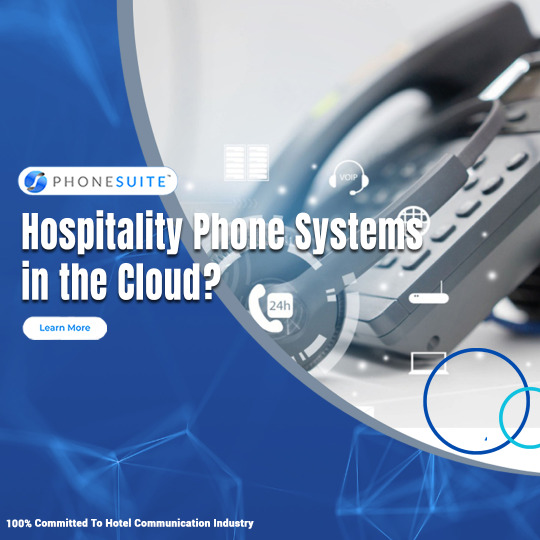
Explore the Benefits of Cloud-Based Phone Systems for the Hospitality Industry: A comprehensive analysis of how cloud technology enhances communication efficiency, reduces costs, and improves guest experiences in hotels and restaurants. Learn More...
#hotel phone system#voip phone system#VoIP#cloud technology#hotel hospitality#hotel pbx#ip telephony#Cloud Telephony#Cloud Calling#VoIP Protocol#SIP Protocol#phonesuite#phonesuite voiceware#phonesuite pbx#Hotel industry#Communications#unified communications#VoIP system#Cloud-based#Voip service#Ip pbx
6 notes
·
View notes
Text
School Management Software in India
VirtueSkool is a cutting-edge school management software in india designed to optimize your institution's performance.
As a comprehensive solution, our software handles a wide range of school management functions, including online admissions, fee management, timetables, attendance, homework, examinations, and human resources.
We offer a user-friendly mobile app for seamless communication between parents, teachers, and administrators. With VirtueSkool, you can streamline operations, improve efficiency, and enhance overall school management.
Experience the power of our school management software in india to elevate your institution to new heights.
For more info about our VirtueSkool software please visit our official website: https://virtueskool.in/
For More Details
Website: VirtueSkool - School Management Software in India
Android App: VirtueSkool: School Management Software in India
YouTube: VirtueSkool - School Management Software in India
Address: 9/2 & 9/3, 2nd St, Ram Nagar, Swarnapuri, Salem, Tamil Nadu 636004
#school management software with cloud based school erp#best school management system in india#school management system in india#school management software in india#ERP software for schools#school management software#school management system application#school management software application#school management system
2 notes
·
View notes
Text
How Does a Cloud-Based Business Telephone System Work? Solving Communication Challenges for Modern Businesses
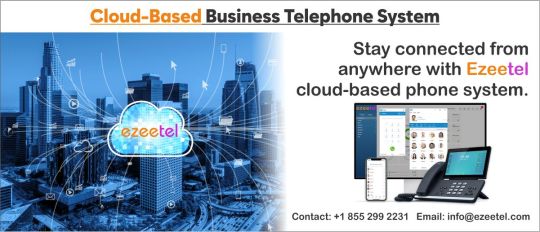
Introduction
In today's fast-paced business world, seamless communication is the lifeblood of any successful organization. Traditional phone systems have their limitations, making it crucial for businesses to adopt modern solutions that can keep up with the demands of the digital era. Enter Ezeetel Telecommunication, a leading provider of cloud-based Business Telephone Systems. In this blog post, we will explore how Ezeetel's cutting-edge technology works, and how it addresses the communication challenges faced by businesses today.
Understanding the Basics of a Cloud-Based Business Telephone System
A cloud-based Business Telephone System, also known as Voice over Internet Protocol (VoIP), revolutionizes the way organizations communicate. Unlike conventional landline systems, where communication is routed through physical phone lines, VoIP operates over the internet, transmitting voice data as packets. Ezeetel leverages the power of cloud computing to deliver a robust, reliable, and scalable telecommunication solution to businesses of all sizes.
The Inner Workings of Ezeetel's Business Telephone System
Virtualization of Phone Infrastructure: Ezeetel replaces the need for bulky, on-premises hardware with a virtual phone infrastructure hosted in the cloud. This means businesses no longer need to invest in expensive telephone exchange equipment, reducing both upfront costs and maintenance expenses.
Seamless Call Routing and Management: With Ezeetel's cloud-based system, incoming calls are efficiently routed to the intended recipients, regardless of their location. Advanced call management features, such as call forwarding, auto-attendants, and interactive voice response (IVR) systems, ensure that every call is handled professionally.
Scalability and Flexibility: As businesses grow, so do their communication needs. Ezeetel's solution is highly scalable, allowing companies to add or remove phone lines effortlessly. This flexibility ensures that the system can adapt to organizational changes without major disruptions.
Unified Communication: Ezeetel integrates various communication channels, including voice, video, and messaging, into a single platform. This unified communication approach streamlines internal collaboration and enhances external interactions with clients and partners.
Mobility and Remote Work Support: In an increasingly remote and mobile work environment, Ezeetel's Business Telephone System shines. Employees can use their smartphones, laptops, or desktop computers to access the system from anywhere with an internet connection, ensuring uninterrupted connectivity.
Solving Communication Challenges for Businesses
Ezeetel's Business Telephone System addresses several critical challenges faced by modern businesses:
Cost-Effectiveness: By eliminating the need for costly on-premises equipment and offering competitive pricing, Ezeetel significantly reduces the overall telecommunication expenses for businesses.
Reliability and Redundancy: The cloud-based infrastructure ensures high system availability, with built-in redundancy to minimize downtime. Businesses can rest assured that their communication channels remain operational at all times.
Enhanced Collaboration: With integrated voice, video, and messaging features, Ezeetel fosters seamless communication and collaboration among team members, boosting productivity and efficiency.
Business Continuity: In case of natural disasters or emergencies, Ezeetel's cloud-based system ensures that communication remains intact, allowing businesses to continue operations without disruption.
Global Reach: Ezeetel's VoIP system enables businesses to establish virtual phone numbers in multiple countries, expanding their reach and providing a localized experience for customers worldwide.
Conclusion
In conclusion, Ezeetel's cloud-based Business Telephone System represents the next generation of telecommunication solutions, empowering businesses with unparalleled communication capabilities. By virtualizing phone infrastructure, enhancing collaboration, and addressing the challenges of modern communication, Ezeetel enables organizations to thrive in today's dynamic business landscape. Embrace the power of cloud-based telephony and take your business communication to new heights with Ezeetel Telecommunication.
#cloud-based Business Telephone System#Business Telephone System#canada#cloud PBX for small business canada
2 notes
·
View notes
Text
#eClinical Solutions Market#Clinical Trial Management System (CTMS)#Electronic Clinical Outcome Assessment (eCOA)#Clinical Data Management System (CDMS)#Cloud-Based eClinical Platforms#AI in Clinical Trials#Clinical Analytics Software#Remote Trial Monitoring#EDC / CDMS Integration
0 notes
Text
The Rise of Online Hospital Management Systems
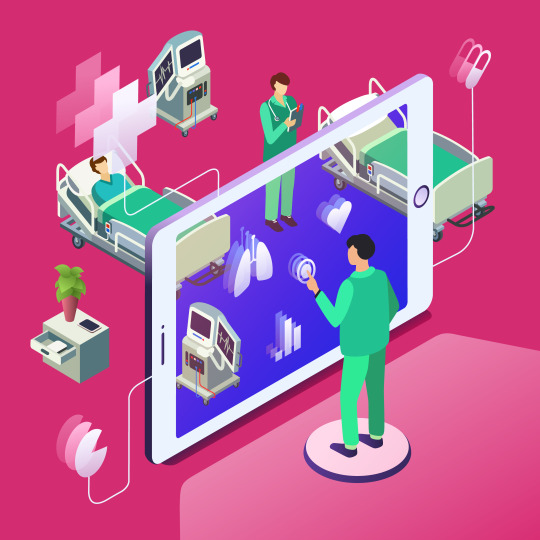
In the fast-evolving world of modern medicine, technology has become an indispensable ally. One of the most transformative innovations in recent years is the Online Hospital Management System. As hospitals and healthcare providers around the globe grapple with the challenges of efficiency, patient safety, data management, and regulatory compliance, this digital solution has emerged as a powerful force driving operational change.
According to a 2024 report by Global Market Insights, the hospital management software market is expected to surpass USD 80 billion by 2030, showcasing the global healthcare industry's urgent demand for smarter, tech-enabled infrastructure. From improving day-to-day hospital workflows to revolutionizing how care is delivered and managed, an online hospital management system is no longer a futuristic tool — it's a present-day necessity.
This article will walk you through the features, benefits, and impact of online hospital management systems and how they fit into the broader landscape of Healthcare Software Services and hospital information systems.
What is an Online Hospital Management System?
An Online Hospital Management System (HMS) is a cloud-based or web-enabled digital platform designed to automate and streamline the administrative, clinical, and financial activities of a hospital. Unlike traditional, paper-based or desktop hospital systems, online HMS tools are accessible from anywhere via the internet, enabling real-time collaboration between departments and seamless access to patient information.
At its core, an HMS serves as the backbone of hospital operations. It typically includes integrated modules for:
Patient Registration and Admission
Electronic Medical Records (EMR/EHR)
Appointment Scheduling
Billing and Invoicing
Pharmacy and Inventory Management
Laboratory and Diagnostic Services
Human Resource and Staff Management
Because it's hosted on the cloud, an online HMS offers robust data backups, regular updates, and enhanced security — a major plus for healthcare institutions handling sensitive patient data.
Core Features That Drive Adoption Globally
The rise of online hospital management systems has been driven by a combination of advanced features and changing expectations in healthcare. Let’s look at the must-have capabilities that make these systems essential:
Electronic Health Records (EHR) Integration
One of the most crucial components of any HMS is its EHR module. With EHRs, hospitals can digitize patient charts, lab reports, radiology images, prescriptions, and treatment plans. This ensures:
Easy retrieval of patient history
Reduced medication errors
Real-time updates across departments
Streamlined insurance and billing documentation
Billing and Insurance Automation
Managing billing manually is time-consuming and error-prone. HMS systems automate billing processes by integrating treatment records, lab services, room charges, and medication data. They also:
Track patient payments and outstanding balances
Support multiple payment modes (cash, card, insurance)
Generate instant invoices and financial reports
Integrate with insurance portals for faster claims
Appointment and Scheduling Management
A cloud-based scheduling tool lets patients book appointments online, while doctors and hospital staff can manage their availability more effectively. Benefits include:
Reduced waiting times
Improved patient satisfaction
Smart allocation of resources
SMS and email reminders for patients
Pharmacy & Inventory Control
HMS tools can maintain a digital record of medicines and supplies. Hospitals can monitor:
Stock levels and expiry dates
Reorder alerts
Vendor management
Billing integration with pharmacy data
This minimizes wastage and ensures continuous supply of critical medications.
Telemedicine Support
Modern HMS platforms are often equipped with telemedicine functionality. Through video consultations, secure chat, and e-prescriptions, doctors can offer remote care services — especially useful during emergencies or in rural areas.
Role-Based Access and User Permissions
Security is paramount in healthcare. An HMS allows user-based role assignments. Doctors, nurses, administrators, and patients access only what they’re authorized to. This reduces misuse, ensures accountability, and supports regulatory compliance.
Benefits of Adopting an Online Hospital Management System
A successful HMS implementation impacts every layer of a hospital’s operation. From the front desk to the ICU, benefits ripple across departments.
Improved Patient Experience
With features like online registration, appointment booking, and instant access to medical history, patients enjoy faster and smoother interactions. Timely communication (e.g., appointment reminders) enhances trust and satisfaction.
Increased Operational Efficiency
An online HMS reduces manual work, automates repetitive tasks, and simplifies data entry — giving healthcare workers more time to focus on patients rather than paperwork.
Real-Time Reporting and Analytics
Administrators and doctors can pull real-time reports on occupancy, financial performance, disease trends, staff productivity, and more. Data-driven insights lead to smarter decisions.
Cost Savings Over Time
Though there's an initial investment, an online system eliminates many hidden costs:
Paper and printing expenses
Staff overtime for manual record-keeping
Revenue leaks from billing errors
Compliance fines due to incomplete documentation
Reduction in Human Errors
With features like auto-populated fields, standard templates, and alerts for missing data, HMS significantly cuts down on:
Medication errors
Duplicated records
Unbilled procedures
Real-World Use Cases: How Hospitals Are Benefiting
Multi-Specialty Hospitals
Large hospitals benefit from seamless coordination across OPD, IPD, pharmacy, and labs. Online HMS ensures smooth patient flow and central data access.
Rural Health Centers
With internet connectivity and mobile devices, remote clinics can deliver expert care via telemedicine and access cloud-based patient data.
Diagnostic Laboratories
Labs can integrate their test equipment with HMS to upload results directly into patient records. It also automates report delivery and payment.
Private Clinics
Smaller facilities use online HMS for managing appointments, prescriptions, and billing with minimal staff, helping them operate efficiently.
Table: Real-World Impact Metrics
Hospital TypeKey Benefit AchievedEfficiency GainMulti-specialtyIntegrated patient management40% reduction in admin workRural health centerRemote patient care via telehealth60% patient reach expansionDiagnostic labAutomated report generation80% faster TAT (Turnaround Time)Private clinicStreamlined appointments & billing50% improvement in scheduling accuracy
Integrating with Other Healthcare Software Services
One of the greatest advantages of modern HMS platforms is their ability to integrate seamlessly with other Healthcare Software Services. These integrations improve interoperability, streamline data exchange, and create a unified digital ecosystem.
Telemedicine Platforms
By integrating telemedicine tools, hospitals can expand their reach and offer remote consultations. This enables:
Secure video calls
Digital prescriptions
Integration of consultation records into the HMS
Laboratory Information Systems (LIS)
When LIS is connected, lab results can be auto-uploaded into patient records. It helps doctors access timely, accurate diagnostics.
Radiology Information Systems (RIS)
RIS integration ensures that imaging reports and scans are linked directly to the patient file, reducing dependency on printed films.
Mobile Health Applications
Patients can use apps to book appointments, access prescriptions, view lab reports, and get health alerts, all connected to the HMS backend.
These integrations are made possible through APIs, HL7 standards, or custom development and allow for highly customizable solutions tailored to each hospital’s needs.
Key Challenges and Considerations Before Implementation
Despite the many benefits, adopting an online HMS isn’t plug-and-play. Hospitals must navigate several hurdles:
Cost and Budgeting
Initial setup — including software purchase, infrastructure, training, and migration — can be expensive. However, cloud models with subscription pricing make it more affordable for small and mid-sized facilities.
Data Migration from Legacy Systems
Hospitals with decades of paper or on-premise digital records face data transfer challenges. Proper planning, testing, and pilot runs are essential.
Training and Change Management
Employees may resist change or find the new system difficult to use. Continuous training, user-friendly interfaces, and internal champions can ease adoption.
Cybersecurity and Compliance
Data breaches in healthcare are serious. Hospitals must ensure encryption, secure access controls, and compliance with regulations like HIPAA, GDPR, or local health data laws.
Vendor Reliability and Support
The quality of customer support, product updates, customization capabilities, and post-launch assistance should be a key factor in vendor selection.
Future of Online Hospital Management Systems
The HMS space continues to evolve with emerging technologies shaping the next generation of digital hospitals:
Artificial Intelligence (AI)
AI tools can analyze vast health data to support clinical decisions, predict disease outbreaks, and optimize staffing levels.
Blockchain Technology
Blockchain can offer tamper-proof records and enhance data sharing between healthcare providers without compromising security.
Voice-Based and NLP Interfaces
Voice commands and natural language processing (NLP) can help clinicians input notes or retrieve patient data hands-free.
Personalized Patient Engagement
Systems will increasingly include features for:
Chatbots for appointment scheduling
AI-based reminders
Real-time treatment tracking via mobile apps
IoT and Remote Monitoring
Wearables and connected devices can feed real-time vitals into HMS, allowing early intervention and better chronic disease management.
Conclusion: Embracing the Hospital of the Future
The digital revolution in healthcare is no longer a prediction — it's unfolding before our eyes. Adopting an Online Hospital Management System is now essential for hospitals striving to remain competitive, patient-centered, and operationally efficient.
From managing appointments to monitoring chronic illnesses remotely, online HMS platforms have redefined what’s possible in patient care. As they continue to integrate with broader Healthcare Software Services, they become the central nervous system of modern medical institutions.
Looking forward, innovations in AI, blockchain, and smart integrations will elevate the hospital information system to an intelligent care delivery platform. For hospitals that embrace this change early, the benefits — in efficiency, care quality, and patient trust — will be significant.
Ready to explore a tailored hospital management solution? Contact us today for a free consultation or product demo that fits your facility’s unique needs.
#Online Hospital Management System#Hospital Management Software#Healthcare Software Services#Hospital Information System#Cloud-Based HMS#EHR Integration#Medical Software Solutions#Digital Health Systems#Hospital Workflow Automation#Hospital Software UAE#Telemedicine Integration#Patient Management System#Healthcare IT Solutions#Hospital Administration Tools#Modern Healthcare Technology
0 notes
Text
Cloud-Based vs On-Prem Time & Attendance: Pros, Cons, and Hybrid Setups
Why Your Time & Attendance System Matters
Efficient time and attendance management is at the heart of workforce productivity and compliance. Whether you are a growing startup or a large enterprise, having the right system impacts payroll accuracy, compliance with labor laws, and employee trust.
Traditionally, many organizations relied on on-premises time and attendance systems tied to local servers and manual configurations. However, with the rise of cloud-based access control and time tracking solutions, businesses now have the flexibility to manage workforce data from anywhere, with enhanced integration capabilities and scalability.
But which is better for your organization: cloud-based, on-premises, or a hybrid approach? Here’s a comprehensive look at the pros, cons, and the evolving hybrid setups to help you make the best decision for your workplace.

What is a Cloud-Based Time & Attendance System?
A cloud-based access control and time & attendance system stores and processes employee check-in/check-out data on secure remote servers, accessible via web or mobile applications. These systems often integrate with cloud-based access control, allowing seamless tracking of employee movements within your facility while offering flexibility for remote and hybrid teams.
Key features include:
Real-time access to attendance data from any location
Integration with payroll systems
Automatic updates and security patches
Mobile app check-in options with geofencing
Cloud storage for easy scalability
What is an On-Premises Time & Attendance System?
An on-premises system is hosted locally within your organization's servers. It typically connects to biometric devices or RFID-based systems, storing data internally and requiring in-house IT for maintenance and security management.
Key features include:
Full control over data and hardware
One-time investment without recurring cloud subscription fees
Customizable configurations depending on your organization’s policies
Cloud-Based Systems: Pros and Cons
Pros:
Accessibility: Manage, monitor, and generate reports remotely. Perfect for hybrid or multi-location teams.
Scalability: Easily add new users or locations without heavy hardware investments.
Reduced IT Burden: No need for on-site servers or manual updates; your provider manages security and uptime.
Integration: Seamless integration with payroll, HRMS, and cloud-based access control systems.
Real-Time Data: Immediate insights for HR, compliance, and management decision-making.
Cons:
Recurring Costs: Monthly or annual subscription fees.
Dependency on Internet: Requires stable connectivity for real-time tracking.
Data Residency Concerns: Some industries may have regulations requiring data to remain in specific jurisdictions.
On-Premises Systems: Pros and Cons
Pros:
Data Control: Full control over where and how data is stored.
Internet Independence: Systems operate even without internet connectivity.
One-Time Cost: Single upfront payment without monthly subscriptions.
Cons:
Limited Accessibility: Data cannot be accessed remotely without VPN configurations.
Maintenance: IT teams handle backups, updates, and troubleshooting.
Scalability Challenges: Adding new locations or users can require significant hardware and software investments.
Integration Limitations: Difficult to connect with cloud-based HR, payroll, and access control systems.
Hybrid Setups: The Best of Both Worlds?
Hybrid models combine cloud-based access control and attendance tracking with on-premises devices to capture check-in/out data while leveraging the cloud for reporting, integrations, and management.
How a hybrid setup works:
Biometric devices or RFID readers capture attendance data on-premises.
Data syncs to the cloud for centralized reporting and analytics.
In case of network failure, devices can store data locally and sync when connectivity is restored.
Benefits of Hybrid Setups:
Resilience: Local data capture with cloud reporting for continuity.
Scalability: Easy to expand across locations while retaining on-prem device control.
Enhanced Compliance: Meets data residency needs while using cloud for analytics.
Integration with Cloud-Based Access Control: Seamless access management and time tracking under a unified platform.
Why Cloud-Based Access Control Matters for Time & Attendance
Time and attendance management isn’t just about tracking in and out times. It’s about securing your facility, managing space utilization, and ensuring only authorized employees access specific zones during designated times.
Cloud-based access control integrates seamlessly with time and attendance systems by:
Providing real-time entry and exit data for accurate attendance tracking
Supporting hybrid work models with mobile-based check-ins using smartphones or QR codes
Automating compliance reporting for audits
Reducing tailgating risks with advanced verification methods
Supporting touchless check-ins via smartphones, BLE, or facial recognition
Solutions like Spintly’s cloud-based access control make it possible to manage both security and workforce tracking efficiently, without heavy infrastructure or complex configurations.
Factors to Consider When Choosing Your System
Size of Organization: Small businesses may benefit from cloud systems to avoid IT overhead, while larger organizations may consider hybrid for better control and scalability.
Regulatory Requirements: Industries with strict compliance needs may require on-prem or hybrid configurations for data residency.
Workforce Mobility: If your employees work in multiple locations or hybrid setups, cloud-based is ideal.
Integration Needs: For advanced integrations with HR, payroll, and access control systems, cloud-based systems offer superior flexibility.
Cost Considerations: Evaluate long-term total cost of ownership, not just upfront expenses.
Why Spintly is a Smart Choice
Spintly offers a cloud-based access control and attendance management platform that modern businesses trust for scalable, touchless, and efficient workforce management. It empowers organizations to:
Enable smartphone-based check-ins to reduce hardware dependency
Provide real-time data for HR and management
Integrate seamlessly with facility and cloud-based access control systems for unified security and workforce tracking
Support hybrid models for enterprises seeking flexibility with compliance
Ensure data privacy and security with enterprise-grade encryption and controls
Modernize Without Compromise
Choosing between cloud-based, on-premises, or hybrid time and attendance systems is not just a technical decision; it is a strategic one impacting your workplace’s productivity, security, and compliance.
While on-prem systems may still work for organizations with specific data control requirements, the flexibility, scalability, and integration capabilities of cloud-based access control and attendance management systems make them the future of workforce management.
Solutions like Spintly help organizations move confidently towards this future, ensuring seamless operations while delivering a secure, modern, and touchless experience for employees and visitors alike.
#cloudbasedsolutions#cloud based software#mobile access#accesscontrol#access control solutions#spintly#access control system#smartacess#biometrics#visitor management system#biometric attendance
0 notes
Text
automatic car paint color matching
Hello everyone! Today we are excited to introduce the intelligent automatic car paint color matching instrument developed by Henghui. This innovative device is revolutionizing the way automotive paint manufacturers formulate, match, and deliver color accurately and efficiently. What Is the Henghui Automatic Color Matching Instrument? The Henghui automatic color matching system is a smart…
#automatic car paint color matching#automotive paint formula system#cloud-based color formula#Henghui color matching device#intelligent color mixing machine
0 notes
Text

PBX Business Phone Systems & Their Impact On Business Growth
PBX business phone systems have emerged as a saviour for small Australian businesses. With many businesses opting to switch to cloud-based phones, it’s a race to see which companies jump on the future of communication and improve their business communications to stand shoulder-to-shoulder with their competitors.
The benefits of cloud-based phones have been thoroughly researched with the results revealing important insights. Research showcased a cost reduction of 7-15% in phone system maintenance costs in companies that implemented cloud-based customer service centres. Plus, 94% of companies also reported that they have greater security after switching to cloud-based systems.
As we dive into the impact that PBX business phone systems can have on Australian businesses, you’ll understand that this trending technology is your ticket to thriving in an increasingly competitive marketplace.
Propel your business forward with cloud-based phone systems that impact business growth
Enhanced customer service
PBX phone systems offer features like call queuing, call routing, and interactive voice response (IVR) ensuring that customers can always reach the right person quickly rather than being put on hold multiple times before speaking to the person they want.
Increased productivity
Whether working in the office or working remotely, employees can use features like voicemail-to-email, mobile integration, and call forwarding to manage calls more efficiently and stay connected with customers, colleagues, and other stakeholders.
Cost savings
Cloud-based phones helped 75% of small businesses save communication costs. Modern PBX business phone systems can do the same by eliminating the need for expensive hardware and ongoing maintenance costs that are often associated with traditional phone systems.
Better team collaboration
PBX systems offer many features like video conferencing, conference calling, and instant messaging. These tools enable seamless collaboration among team members and even cross-functional team members who work from different geographic locations.
Empower your business with Uniden communication solutions
Uniden Voice Over Cloud is a trusted name in telecommunications and offers many cloud-based business phone systems for small Australian businesses. With a focus on reliability, user-friendliness, and affordability, our solutions are designed to meet the demands of Australian businesses.
Take a look at our 40+ free features and find out what makes us Australia’s smartest cloud-based business phone system.
#cloud based phone systems#business phone systems#voip phone price#school phone systems#voip for law firms#real estate phone system#phone systems for healthcare
0 notes
Text
1 note
·
View note
Text

How online phone systems help remote workers thrive
Remote work has become the new normal in many organisations. The latest data from the Australian Bureau of Statistics reports that 4 out of 10 Australians worked from home at least once a week in 2023. With many businesses offering remote working options, online phone systems have emerged as a complete game-changer, offering many benefits for remote teams.
These cloud-based communication platforms go beyond traditional phone systems and offer a range of features designed to improve collaboration, improve productivity, and streamline workflows. By leveraging these online systems, remote teams can stay connected and work efficiently, irrespective of their physical location.
Whether you’re a small start-up or a large organisation, the potential that these innovative systems provide can help you make informed decisions about your communication infrastructure.
Features of online phones that drive business success
Video conferencing
Host face-to-face meetings remotely, fostering stronger team connections and more engaging client interactions.
Call analytics and reporting
Gain valuable insights into call patterns, team performance, and customer interactions to optimise operations.
Unified communications
Integrate voice, video, messaging, and file sharing in one platform for better collaboration across remote teams.
Advanced call routing
Ensure calls reach the right person or department quickly, improving customer satisfaction and team efficiency.
Mobile apps
Enable team members to access all phone system features on their smartphones, maintaining productivity on the go.
Uniden’s role in improving business communications
Uniden Voice Over Cloud is a reliable and feature-rich communication system tailored to the needs of modern businesses. We offer Australia’s smartest cloud-based business phone systems specifically designed for Australian businesses.
Our business phone systems help you create a comprehensive communication ecosystem for businesses of all sizes.
#cloud based phone systems#business phone systems#voip phone price#school phone systems#voip for law firms#real estate phone system#phone systems for healthcare
0 notes